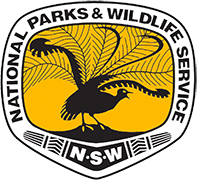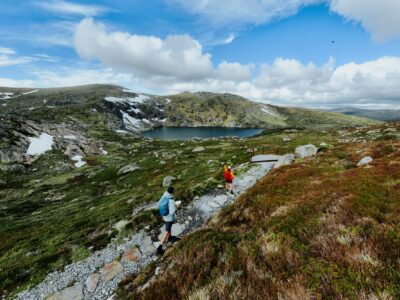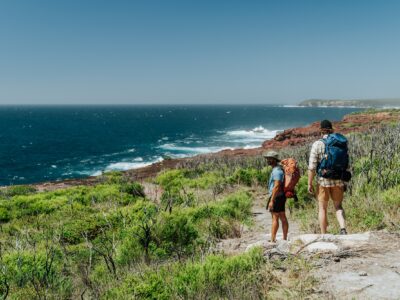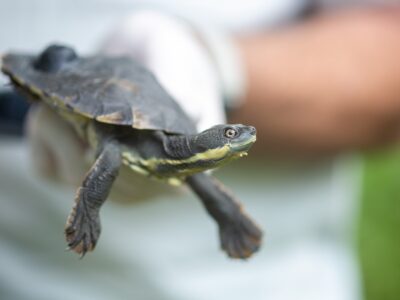The Pilliga Forest, situated between the towns of Coonabarabran and Narrabri, in north western NSW, offers a rugged, remote and iconically Australian landscape, not found anywhere else in the country. To accurately picture the vast size of the Pilliga Forest, think big: two Sydney metro’s big. Home to the largest native forest west of the Great Dividing Range, the Pilliga Forest consists of unmistakably beautiful Australian trees and bushland, encompassing about 5,000 square kilometres of public bushland with stunning sandstone gorges and wildlife.

Long stretches of road that go on forever
Timmallallie National Park
Harrison Candlin/DPIE (2018)
With long straight roads like this that go on forever, this place reminds you that you’re deep in the wild, surrounded by an ancient land rich in Aboriginal culture and history.
Pilliga is the traditional Country of the Gamilaroi People and their connection to the land is visible throughout Country today.
-
How to get there:
 Photo Information
Photo InformationAnd we are off!
Timmallallie National Park
Harrison Candlin/DPIE (2018)
 Photo Information
Photo Information#Roadtrip
Timmallallie National Park
Harrison Candlin/DPIE (2018)
 Photo Information
Photo InformationRoad trip to the Pilliga
Harrison Candlin/DPIE (2018)
Located 6hrs drive north-west of Sydney, a 25min drive north of Coonabarabran and 20mins south of Narrabri, this gigantic forest is well off the tarmac, but more than worth the effort to get there. The best way to enter the park is via the town of Baradine, where you can access the main fire trail which runs through the spine of the whole forest. It’s best to venture this wilderness in a 4WD or a 2WD with some ground clearance as the terrain can vary throughout the park. Sand is also common and major flooding can occur, leaving roads and creek crossings uncrossable. For your own safety, check the park alerts before you head off. We also recommend ‘knowing your weather’ – here are some handy tips by the BOM (Bureau of Meteorology) to keep in mind.
Ranger tip: It’s definitely recommended to visit the Pilliga Forest Discovery Centre beforehand, to let them know you are in the area, ask any questions and gain some local knowledge on the forest and its history, grand scale and tales.
-
Worth a visit: Pilliga Forest Discovery Centre

Photo InformationLearn about native animals like the Pilliga mouse
Justin Mallee/DPIE

Photo InformationLearn about the native animals like the grey-crowned babbler
Justin Mallee/DPIE
Located in the town of Baradine, the Pilliga Forest Discovery Centre is well worth your time if you’re planning on venturing into the forest. The interactive displays at the centre give you a sense of awe for the size of the forest. Learn about the native animals, plants and the forest’s different stages in history, from major bushfires to mining. The knowledgeable staff offer advice on the best routes and sights to see, as well as insights into the cultural and environmental history. Stopping here will give you the first taste of this dramatically unique landscape and inspire you to go and see it for yourself.
Did you know? There are 13 different reserves managed by NPWS in the Pilliga. The area also has a number of state forests that are open to the public. The Pilliga Forest Discovery Centre staff can help you with info and directions.
-
Where to stay: Sculptures in the Scrub campground
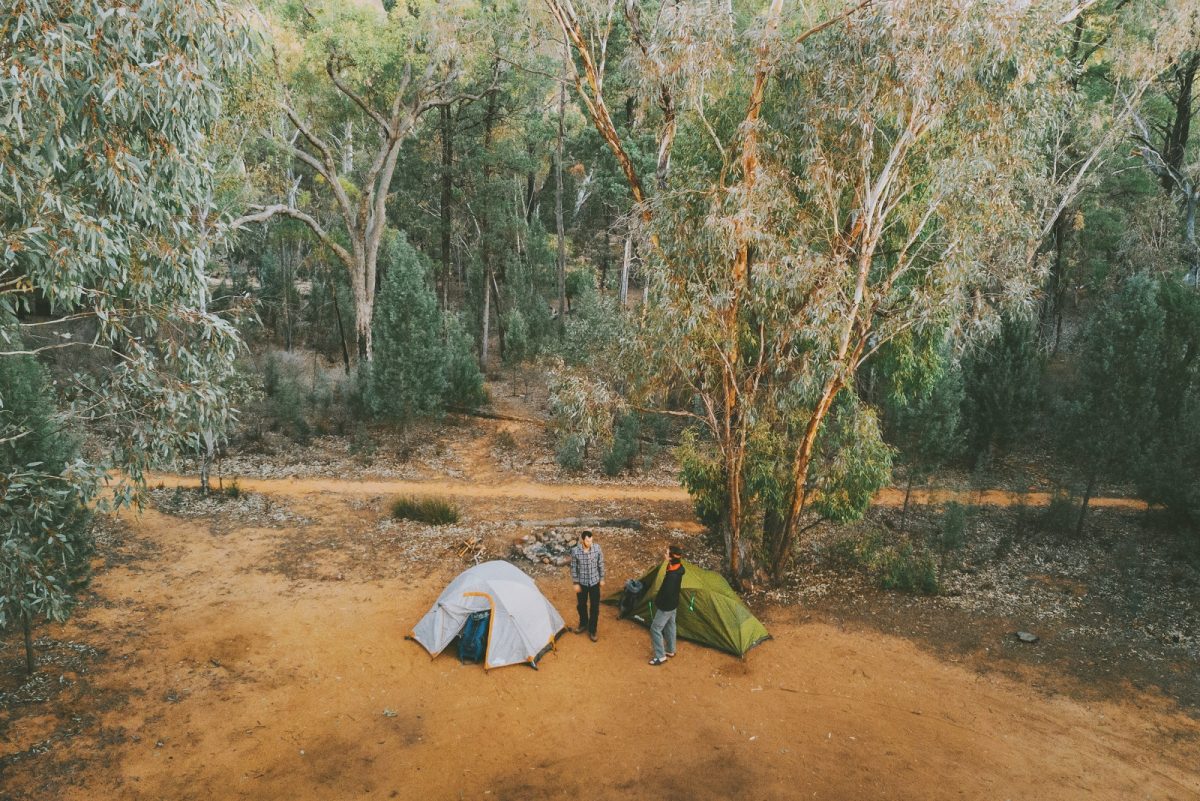 Photo Information
Photo InformationSculptures in the Scrub campground
Sculptures in the Scrub campground
Timmallallie National Park
Harrison Candlin/DPIE (2018)
Tucked away under beautiful native trees, lie spacious campsites in the Sculptures in the Scrub campground, with their own fire pits. There’s no grass, so you’ll have to set up your tent in the dirt, or bring a tarp to put beneath it. Within 100m of the nearest campsite you’ll find campground facilities, including toilets and BBQs. The phone service is very limited out here and only brief sections of the Sculptures in the Scrub track have reception. Download the NSW National Parks app to your phone for offline maps and park info that you can access anytime.
It’s important to have extra water and food as this area is very remote. Planning a campfire to roast your marshmallows? Be aware that fires are only permitted in the designated fire pits. Check the park alerts to make sure there are no total fire bans in place.
Ranger tip: Pilliga Forest is very prone to bushfires, so be conscious of the size of your fire, be sure to put it out and stay with it until it’s completely extinguished. Find more information on how to correctly manage your campfires here. Fires are not permitted during the bush fire danger period (usually October to March inclusive).
-
Explore and be in awe: Sculptures in the Scrub track, Salt Caves and the Piliga lookout tower

Photo InformationA sculpture created in collaboration with local Aboriginal elders in the Pilliga Forest.
Sculptures in the Scrub walking track
Timmallallie National Park
Harrison Candlin/DPIE (2018)

Photo InformationAdmire the amazing sculptures
Sculptures in the Scrub walking track
Timmallallie National Park
Harrison Candlin/DPIE (2018)
This area, known as the Dandry Gorge, speaks to you on a different level. It’s silent, it’s special, it’s vast, completely remote and deeply rich in Aboriginal history. The geology is dominated by Pilliga sandstone and large rocky sandstone outcrops. The sculptures found along the Sculptures in the Scrub track, Timmallallie National Park in the Dandry Gorge, were made by five artists who collaborated with Aboriginal elders and young people of the region to depict stories of contemporary Aboriginal culture and the connection to the landscape of the Pilliga. Walk the track at your own pace, and you might be lucky enough to have it all to yourself.
Did you know? The Pilliga is home to a large koala population in NSW. If you are lucky enough to spot a koala, please report your sighting to the Baradine NPWS office.
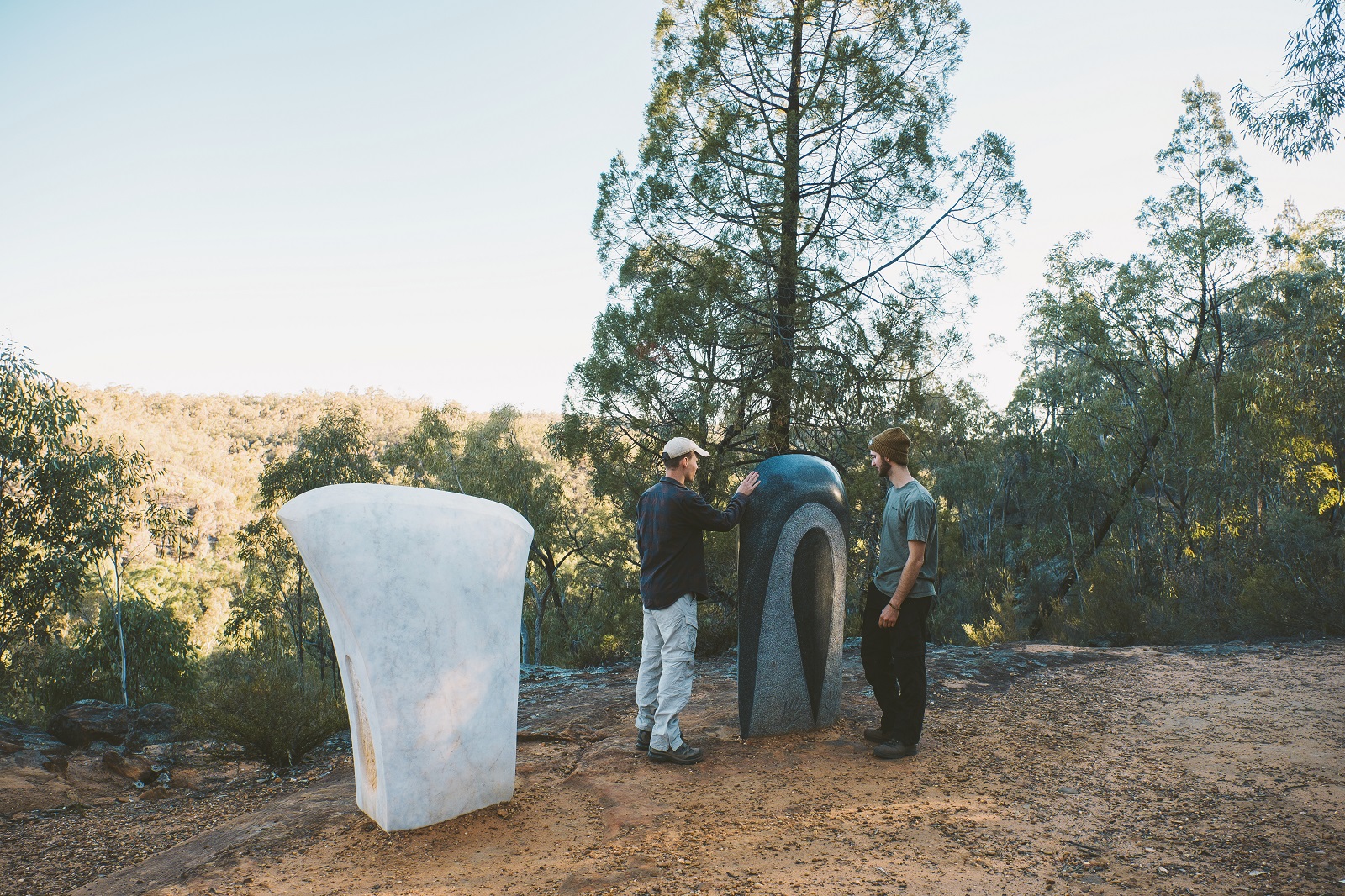 Photo Information
Photo InformationIncredible sculptures
Sculptures in the Scrub walking track
Timmallallie National Park
Harrison Candlin/DPIE (2018)
One of the most incredible sculptures is the axe heads that represents a white man’s metal axehead.

Photo InformationPilliga lookout tower
Timmallallie National Park
Harrison Candlin/DPIE (2018)


Photo InformationPilliga lookout tower
Timmallallie National Park
Harrison Candlin/DPIE (2018)

Photo InformationPilliga lookout tower
Timmallallie National Park
Harrison Candlin/DPIE
If you’re staying at Sculptures in the Scrub campground, the Salt Caves and the Pilliga lookout tower are an easy 30min drive through the forest. Located in Timallallie National Park, in the northern section of the Pilliga Forest, this area is positioned in what seems to be the middle of the Pilliga Forest. From here, the park goes almost 70km in every direction, and once up the fire tower, viewers can experience a massive sense of scale and perspective. To the north, Mount Kaputar is visible on the horizon and to the south, the Warrumbungles paint a beautiful skyline of jagged mountains. The nearby, Salt Caves picnic area is perfect for a bite to eat. The area has great BBQ facilities, toilets, and plenty of red dirt to add to that bush feeling.
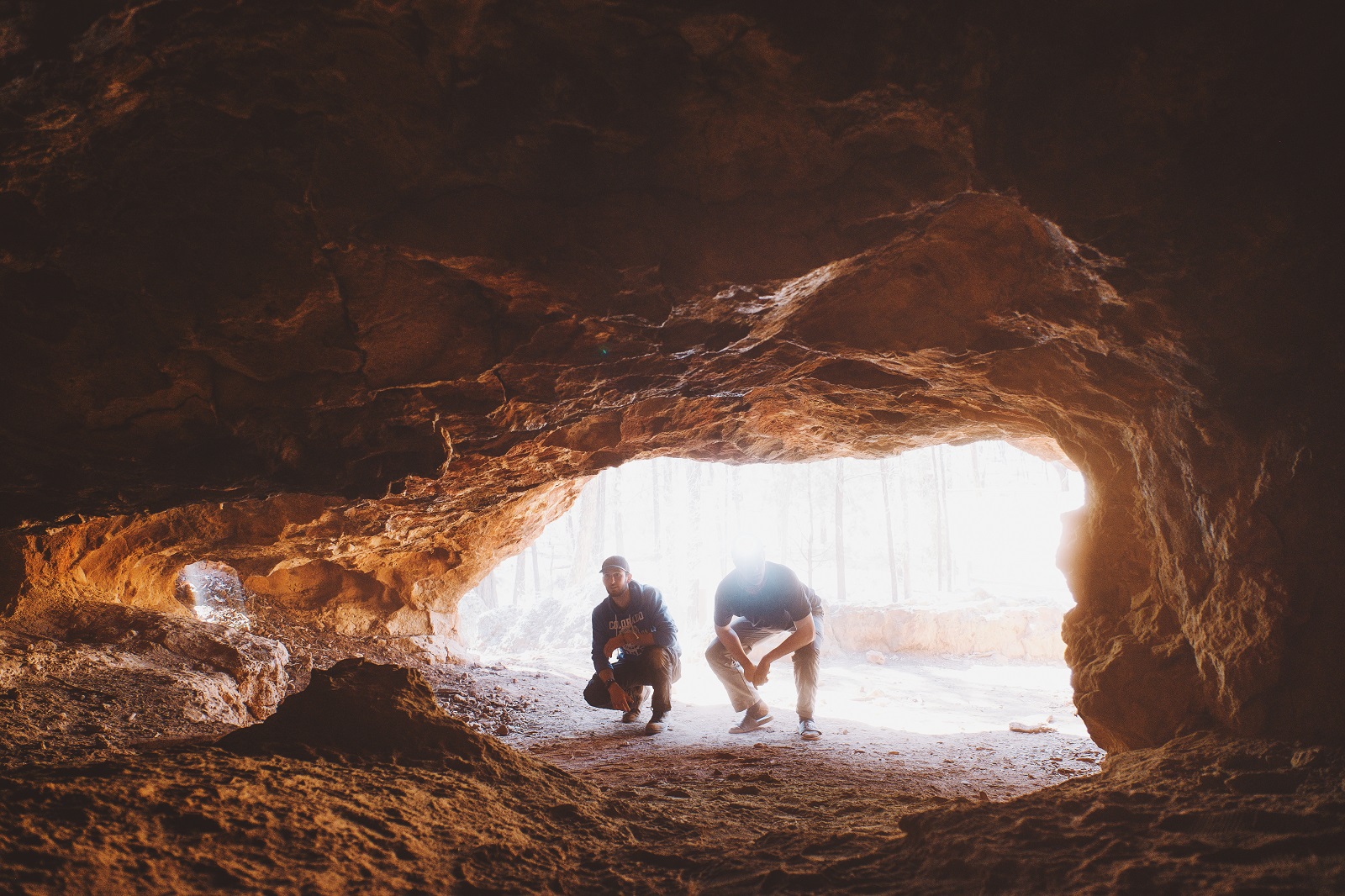 Photo Information
Photo InformationSalt Caves at the Pilliga
Timmallallie National Park
Harrison Candlin/DPIE (2018)
The Salt Caves are about 50m from the carpark. The caves are incredible, you can walk roughly 20m inside of them. From the outside, you wouldn’t sense there is a deep cave system just through the entrance. It’s a historic Aboriginal site, used as a traditional shelter by the Gamilaroi people. Walk through and spot traces of light beaming through the cracks in the rock.
All the tracks in the Pilliga are of Aboriginal significance, so please remember to respect the Gamilaroi people.
DownloadNSW National Parks appDownload your next adventure -
Discover and connect: Sandstone Caves walking track
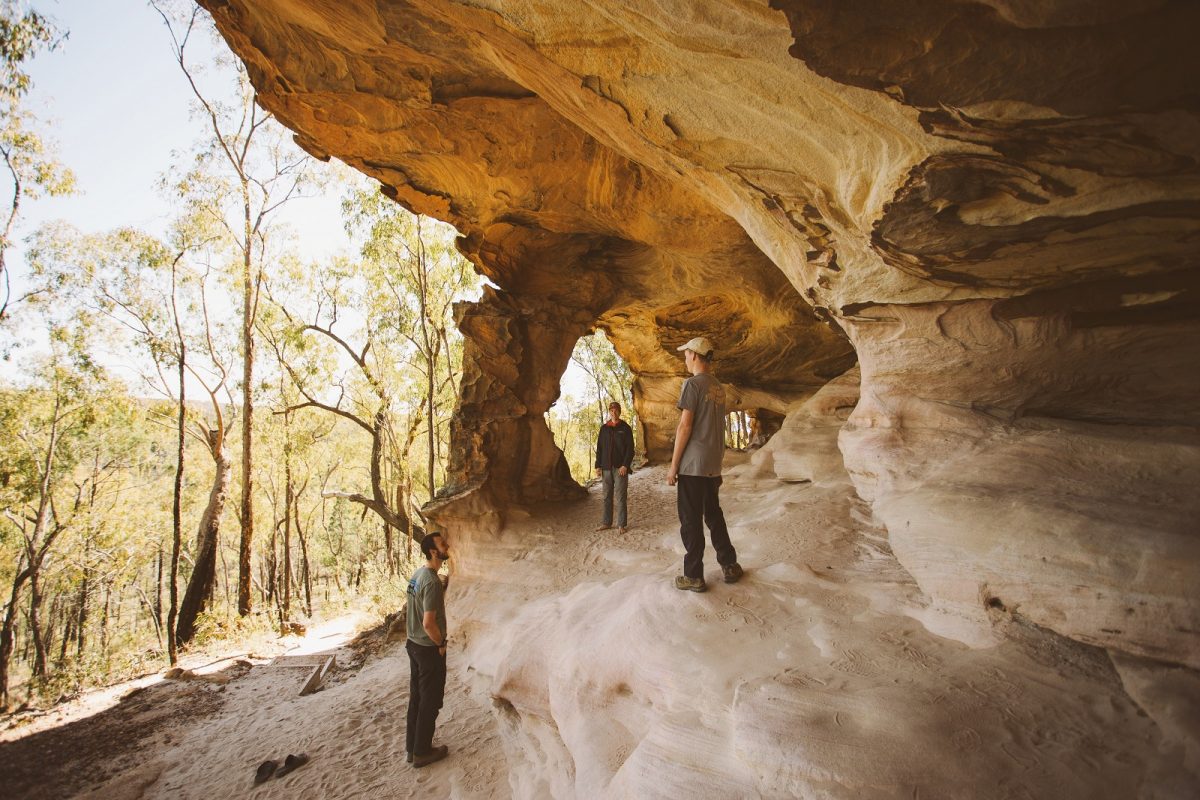 Photo Information
Photo InformationSuch a special place and one to see for yourself
Sandstone Caves
Pilliga Nature Reserve
Harrison Candlin © Harrison Candlin / DPIE (2018)
Such a special place and one to see for yourself. Pilliga sandstone is the foundational layer for the entire Pilliga Forest. The rock formation (sandstone outcrop) was formed by vast layers of sediment laid down in a series of lakes many million years ago (in the Jurassic age). Over thousands of years, the rock has slowly weathered and as a result, beautiful shapes, colours and holes have appeared in the rock. The caves overhang metres over your head and you will spot Aboriginal rock art and carvings in the rock, along certain parts of the track. This place just screams serenity. Walk it slowly self-guided, be in awe of every unique pattern and colour. As a matter of respect for the Gamilaroi people and this special place, please avoid the temptation to touch the rock art and carvings in the rock.
Directions to access the Sandstone Caves are required as the area is not signposted (at the request of Aboriginal Elders) check-in with the friendly staff at Pilliga Forest Discovery Centre. Photography is permitted, however, visitors are requested not to use flash photography.
Warrumbungle National Park and Mount Kaputar National Park are well worth the visit if you’re in the Coonabarabran/Narrabri region. Both offering a playground for the adventurous, with great hiking, climbing, stargazing and camping options.
DownloadNSW National Parks appDownload your next adventure
For a genuine rugged and remote experience that’s geologically different to any other part in Australia and well off the grid, the Pilliga Forest is an area of unique landscapes, vast bush and ancient Aboriginal culture. Be prepared for a wild, inspiring bush experience and hopefully catch a glimpse of a koala in the forest’s red gums.
